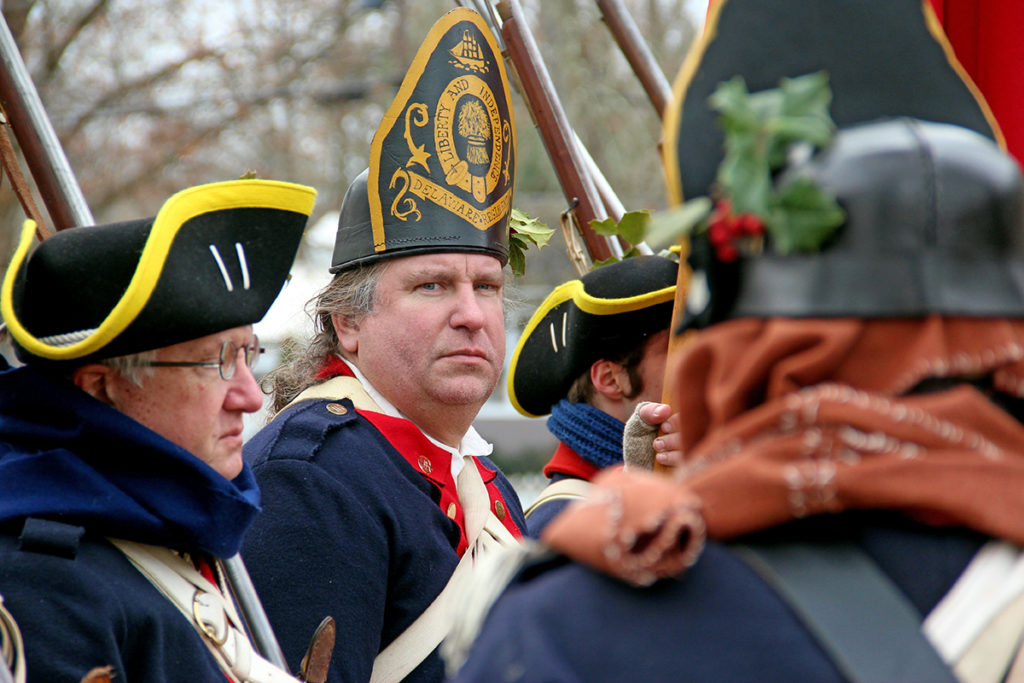History

In the winter of 1776, General George Washington and his ragged army had experienced only defeat and despair. The War for Independence was going badly, with failure following failure.
In the preceding months, Washington’s campaign in New York had not gone well; the Battle of Long Island ended in a loss when the British troops managed to out-maneuver the Continental Army. A series of defeats settled around Washington as he was forced to retreat across New Jersey to Pennsylvania American troops arrived at water’s edge in Trenton around noon on December 2, 1776. Other regiments joined the Pennsylvania encampments later in the month.
As the harsh Pennsylvania winter set in, the morale of the American troops was at an all-time low. The soldiers were forced to deal with a lack of both food and warm clothing, while Washington watched his army shrink due to desertions and expiring enlistments. Now, more than ever, a victory was desperately needed.
General Washington hatched a daring plan to cross the Delaware River under the cover of darkness, march to Trenton and attack the Hessian outposts in and around Trenton. The boats to be used for the crossing were gathered earlier in the month in compliance with Washington’s orders, primarily as a defensive measure. Various types of boats were collected; most notable were the large, heavy Durham boats used to carry pig iron down the Delaware.
Fully expecting to be supported by two brigades south of Trenton, Washington assembled his own troops near McConkey’s Ferry in preparation for the crossing. By about 6 PM, 2,400 troops had begun crossing the ice-choked river. The operation was slow and difficult due to the condition of the river. There was an abrupt change in the weather forcing the men to fight their way through sleet and a blinding snowstorm. These obstacles proved to be too much for the supporting brigades led by Generals Cadwalader and Ewing, ultimately preventing their crossing at southern points along the Delaware.
Against all odds, Washington and his men successfully completed the crossing and marched into Trenton on the morning of December 26, achieving a resounding victory over the Hessians. By moving ahead with his bold and daring plan, Washington re-ignited the cause of freedom and gave new life to the American Revolution.
Learn More
Before the Crossing
- Why Was Trenton Occupied by Hessians and Not the British?
- Why Didn’t the Hessians Fortify Trenton Ahead of Washington’s Attack?
- What Happened to the Troops That Were Supposed to Help Washington at Trenton?
- How Did Bucks County Residents Feel About the War?
- What Did Washington’s Army Eat Before and After the Crossing?
During the Crossing
- Where Exactly Did Washington Cross the Delaware?
- What Time Did Washington Cross the Delaware?
- Did Any Soldiers Fall Into the River During the Crossing?
- What Role Did the Marbleheaders Play in the Crossing?
- How Did the Army Get Artillery and Horses Across the Delaware?
- Which Founding Fathers Participated in the Crossing?
- What was the Weather Like During the Crossing?

